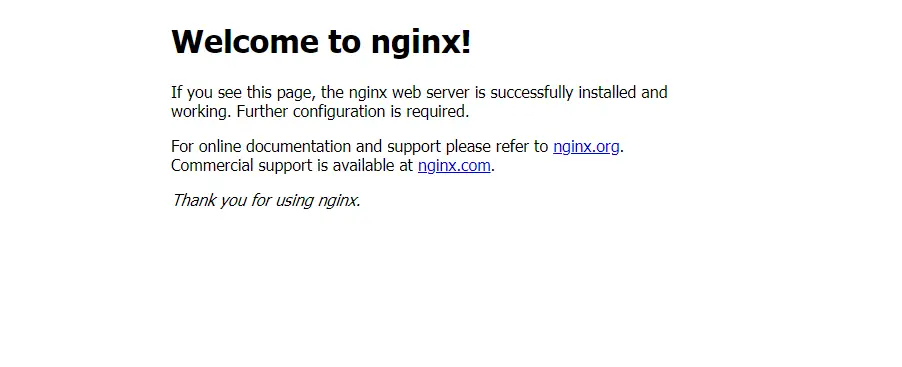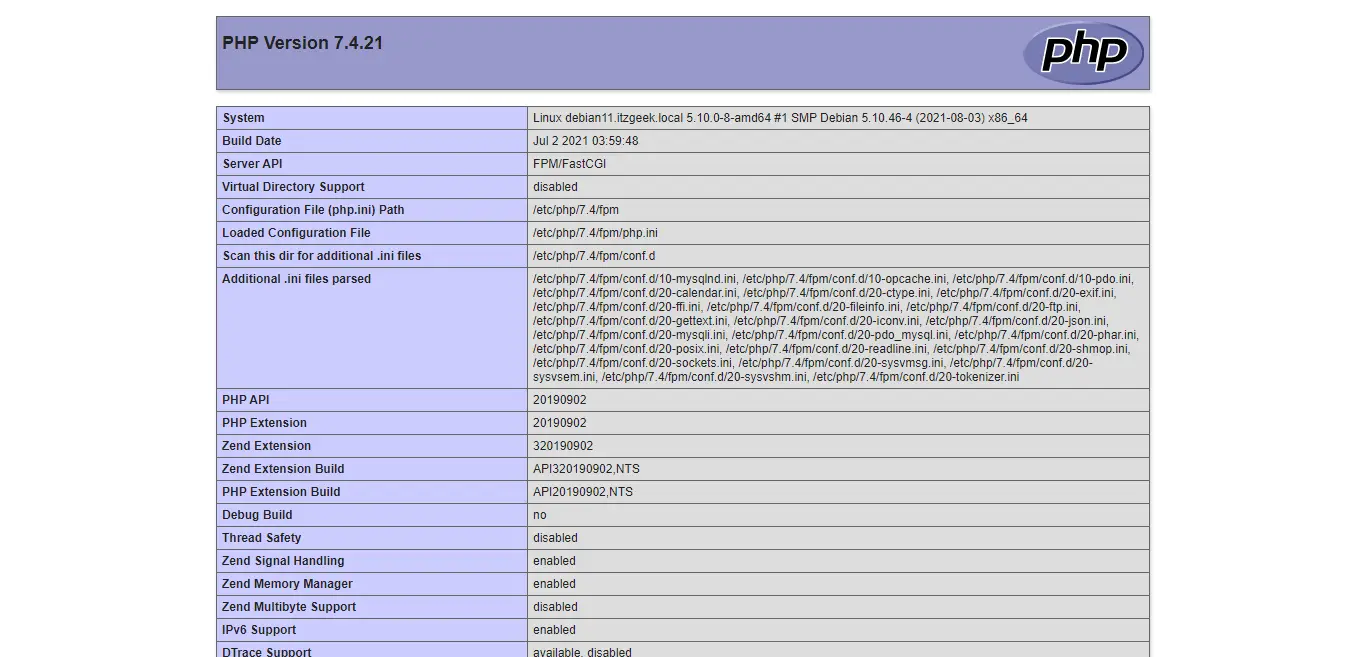How To Install Nginx, MariaDB, PHP (LEMP Stack) on Debian 11
The LEMP stack, which stands for Linux (the operating system), Nginx (the webserver), MariaDB/MySQL (the database), and PHP (the programming language), is the perfect platform to host traffic-intensive dynamic websites and applications.
In this post, we will see how to Install LEMP Stack on Debian 11.
Prerequisites
To install the LEMP stack on Debian 11, you need to have sudo privileges on the system.
Install LEMP Stack
Install Linux
Follow the Step by Step installation of Debian 11 or Upgrade Debian 10 “Buster” to Debian 11 “Bullseye”.
Proceed to the installation of AMP (Nginx v1.20, PHP-FPM v7.4, MariaDB v10.5) on Debian 11.
Install Nginx
Nginx is a free, open-source webserver that provides HTTP, reverse proxy, caching, and load-balancing functionality. It’s a great alternative to Apache, and it’s easy to set up.
Install below packages.
sudo apt update sudo apt install -y curl gnupg2 ca-certificates lsb-release
Download the Nginx repository signing key and add it to the system.
curl -fsSL https://nginx.org/keys/nginx_signing.key | sudo gpg --dearmor -o /usr/share/keyrings/nginx-keyring.gpg
Add Nginx repository to the system.
echo "deb [signed-by=/usr/share/keyrings/nginx-keyring.gpg] https://nginx.org/packages/debian `lsb_release -cs` nginx" | sudo tee /etc/apt/sources.list.d/nginx.list
Install Nginx package using the following command.
sudo apt update sudo apt install -y nginx
Start the Nginx service after the installation.
sudo systemctl start nginx
Open a web browser and visit the below URL.
You will get the welcome page that confirms that Nginx has been successfully installed and is up and running.

Nginx’s default document root in Debian 11 is /usr/share/nginx/html/. The configuration files are found under /etc/nginx/ directory.
Install MariaDB
MariaDB is a drop-in replacement for MySQL that supports all standard MySQL features. We will set up MariaDB as part of a LEMP (Linux, Nginx, MariaDB/MySQL, PHP) stack in our installation.
Install the MariaDB server v10.5 from the Debian repository.
sudo apt install -y mariadb-server mariadb-client
MariaDB service should be up and running at this moment. First, check the status of the MariaDB service using the below command.
sudo systemctl status mariadb
Next, make the MariaDB server secure by running the mysql_secure_installation command.
Install PHP
The PHP FastCGI Process Manager (FPM) is an alternative PHP FastCGI implementation with additional features useful for bigger and busier sites. It can handle a lot more requests per second than other PHP FastCGI implementations.
Install php-fpm package and PHP MySQL extension.
sudo apt install -y php-fpm php-mysql php-cli
Edit the configuration file.
sudo nano /etc/php/7.4/fpm/pool.d/www.conf
Change the ownership and group from www-data to nginx for Unix socket.
listen.owner = nginx listen.group = nginx
Create Virtual Host
Now, create a virtual host on the Nginx server for the following details to test the LEMP stack.
Server Name: site.itzgeek.local
Document Root : /usr/share/nginx/html/site.itzgeek.local
Create a virtual host configuration file site.itzgeek.local.conf in /etc/nginx/conf.d/ directory.
sudo nano /etc/nginx/conf.d/site.itzgeek.local.conf
Add the following content.
server {
server_name site.itzgeek.local;
root /usr/share/nginx/html/site.itzgeek.local;
location / {
index index.html index.htm index.php;
}
location ~ \.php$ {
include /etc/nginx/fastcgi_params;
fastcgi_pass unix:/run/php/php7.4-fpm.sock;
fastcgi_index index.php;
fastcgi_param SCRIPT_FILENAME /usr/share/nginx/html/site.itzgeek.local$fastcgi_script_name;
}
}
Create the document root directory for the virtual host.
sudo mkdir /usr/share/nginx/html/site.itzgeek.local
Place a PHP file onto the document root.
echo "<?php phpinfo(); ?>" | sudo tee /usr/share/nginx/html/site.itzgeek.local/index.php
Restart the Nginx and PHP-FPM services.
sudo systemctl restart nginx sudo systemctl restart php7.4-fpm
Test LEMP Stack
First, create a host entry for your domain (site.itzgeek.local) in the /etc/hosts file to test the LEMP stack locally. Then, open up your web browser and type your domain name in the web address.
The page will look like below:
As you can see in the screenshot, the PHP is working through FPM/FastCGI (Server API).

Scroll the page further down to view the PHP support for MySQL, XML, and other extensions.
Conclusion
I hope this post helped you to install the LEMP stack on Debian 11. Additionally, you can install phpMyAdmin to manage MariaDB over the web interface.
